
LONDON TRANSPORT T CLASS
AEC Regal single-deckers
This page prepared by Ian Smith, created 2nd September 1999, updated 14th October 2019.
15T13 Regals: T769 - T798 (total 50) The new Country Area Regals caused a row when they were introduced.
Why should the Country Area get the first modern buses that London Transport had after the war?
Modern? Yes: the 15T13s were a very different kettle of fish from the 14T12s.
They were postwar-standard Regal IIIs, with a postwar RT chassis specification:
large engine (9.6 litre AEC A208); preselector gearbox and fluid flywheel.
No paltry 7.7 litre engine and crash gearbox here!
The new Country Area Regals caused a row when they were introduced.
Why should the Country Area get the first modern buses that London Transport had after the war?
Modern? Yes: the 15T13s were a very different kettle of fish from the 14T12s.
They were postwar-standard Regal IIIs, with a postwar RT chassis specification:
large engine (9.6 litre AEC A208); preselector gearbox and fluid flywheel.
No paltry 7.7 litre engine and crash gearbox here!
The body, by Mann Egerton, was conservative in design, but with the elegance of simplicity of line and a care with details. An external sliding door completed the forward entrance. An oddity was the livery chosen: wartime Country Area green and white, rather than the postwar green and cream already applied to the "provincial" STLs.
T792 in the Cobham Museum, in green/white livery.
The 1950s brought a new Country Area livery,
and the 15T13s were soon in overall green with thin cream lining.
Crawley (CY) received an allocation in June for use on the Surrey-Kent border, bringing them into the Southern division. They were mainly used on the new 473 (split off from the 434), and 426 and in their early days there, and then on 853 and 434.

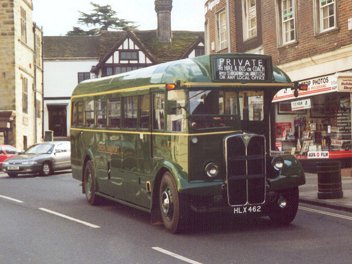
T792 on a Running Day at East Grinstead, April 2001, where it made a foray on the 434 to Crawley.
Grays received an allocation for the 375: Rainham Ferry - Rainham Crossing, and then for the 328C to Aveley.
T792 visited another latterday niche of the type on a little running day on 2nd August 2015. This time it was the 394 group. It is seen by the old LT telephone pole bus stop flag at Cherry Tree Farm on the 394 to Great Missenden, and at the pub at Swan Bottom, a 394D terminus.At Crawley the 434 and 473 lost their westward stretch between Crawley and Horsham to double-decking by the 405 with RTs. RFs took over the eastern section of both. The 15T13s were left with contracts and works journeys. They kept the circular 426 for a while, and gained journeys on the 424, where they worked the branches to and from Outwood and Horne, including carrying children to and from school, with journeys to Reigate and East Grinstead. I suspect that the school journey requirement required the capacity of a big T rather than a GS, while the daytime journeys were too unremunerative for a new RF. T792 revisited its old haunts at Crawley on a "Country Bus Rallies mini Running Day on 1st September 2013. It worked on the 424 branches from Horley, to Outwood and Horne, as well as on the school journey to/from Reigate.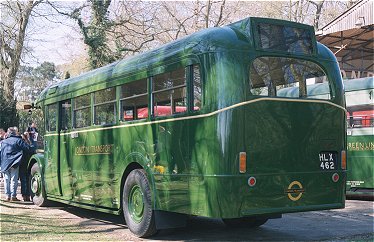
T792 : the rear nearside view, at Cobham Bus Museum, April 2002.But by the end of 1956 the picture had changed dramatically. Their work in the north-west suburbs was almost at an end, with individual buses operating from Hemel Hempstead, Amersham and Tring. Some were working at Grays and Crawley, and others were stored around the Country Area, at Hemel Hempstead, Reigate, Dunton Green, Grays..Perhaps more interestingly there had been a couple on loan to Kingston (K) from August 1956 working on the 216, of which one was now at Norbiton (NB) on the 201. This latter allocation settled down to three, although the three kept changing as the buses went through their overhaul cycle. All retained their green livery.
Others settled down as staff buses: two from Reigate, taking over from the 10T10s,
and one (T785) as a south-east London staff bus, allocated to Plumstead (AM),
Abbey Wood (AW) and New Cross (NX) at different periods.
By 1960 the careers of the survivors were being watched with interest. T787 finally surrendered in April 1963, and in August made the long trip to Yorkshire, to W.North of Leeds.
Since then T792 has been given a very thorough overhaul,
with new body framing, new panels,
repaint into green with cream lining and a thorough chassis overhaul.
It is almost a new bus.
Reappearing in autumn 2000, it has graced various rally venues,
including Amersham, East Grinstead and the Cobham Museum Open Day.
|
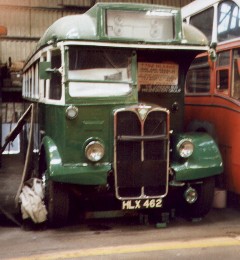
 The introduction of the
The introduction of the 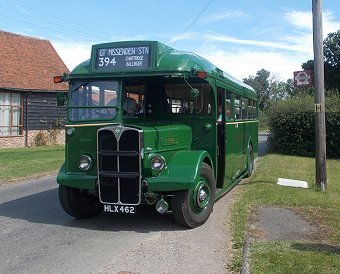
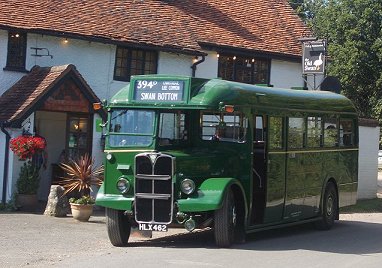

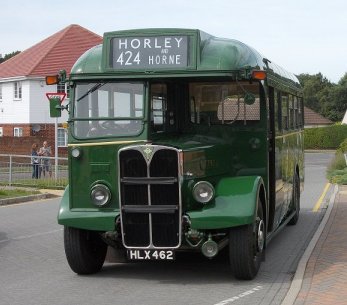
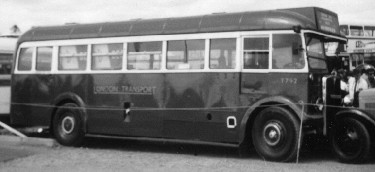
 T719-768: 15T13 histories
T719-768: 15T13 histories Bus Stop
Bus Stop T contents
T contents 14T12s
14T12s 15T13s
15T13s